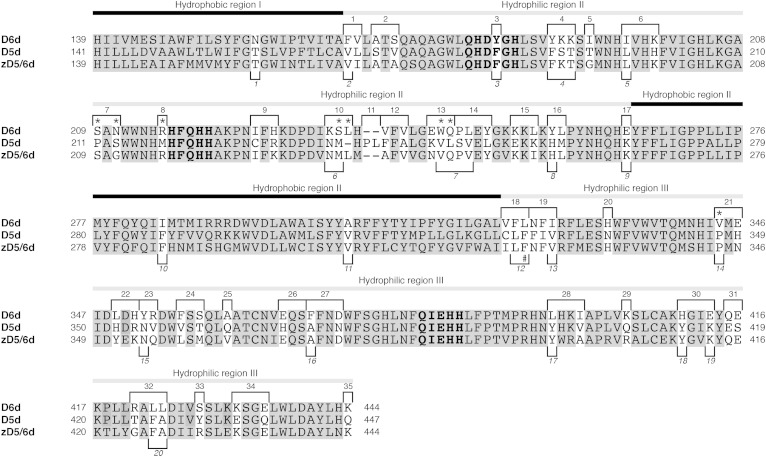Fig. 1.
Alignment of the amino acid sequences of rat D6d and D5d and zebra fish zD5/6d. Site-directed mutagenesis was applied to create mutations at the sites shown with a white background using oligonucleotide primers indicated by respective numbers above (d6d5-1–d6d5-35) and below (d6zebd5-1–d6zebd5-20) the alignment. Conserved histidine clusters are indicated by bold letters. Asterisks indicate mutation sites that altered the substrate specificity from D6d-type to D5d-type; “#” indicates the mutation site that gave rise to Δ5/6 bifunctionality of D6d.

